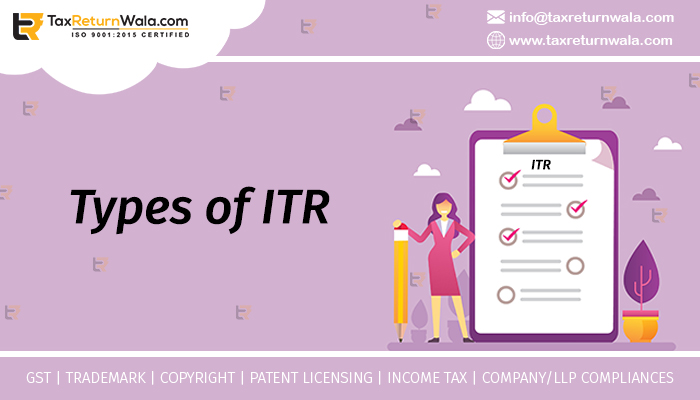Different Types of ITR Forms One Needs To Consider
The government uses the tax you pay for different functions and operations of government like building infrastructure, social welfare schemes, government services, etc. It indirectly benefits you. Income tax is levied on your income.
You need to submit the form to the Income-tax department where your income is provided. These forms are called Income tax Returns (ITR). Then the income tax department evaluates and determines the tax limit for an individual.
This process is lengthy. You need to choose the correct form out of 7 types of forms. It depends on the income of the individual, the type of income, and the category of the taxpayer (HUF, company, individual, etc.). If you choose the wrong form, you will have to go through that process again.
In this article, we will discuss the types of ITR. There are 7 types of ITR, which are ITR-1, ITR-2, ITR-3, ITR-4, ITR-5, ITR-6, and ITR-7.
ITR-1
This form is only for a resident of India who falls under the below-mentioned categories:
- Income from a pension or salary
- Income from single house property (Losses are carried forward).
- Income from agriculture (not more than Rs.5,000)
- The total income produced can be a maximum of Rs.50 lakh.
- Income from other sources like lottery or winning horse races.
You cannot Opt for this Form if:
- Total income is more than Rs.50,000
- Individuals have taxable capital gains
- Income is from more than one house property
- any investments were made in unlisted equity bonds during the financial year.
- you are an NRI or RNOR.
- Income is from agriculture is more than Rs.5,000
- Income is from profession or business
- The taxpayer is the director of a company
- Income is from a property located abroad
- An individual possesses foreign income or foreign assets.
ITR-2
This form is for :
- Individuals and HUF, who are not have any income from profit and gains of business or profession. They should submit if they are having:
- Income more than Rs.50 lakh.
- Income from Salary or pension.
iii. Income from house property
- Income from winning a lottery or horse race
- Income generated as the director of the company.
- Income from Agricultural which is more than Rs. 5,000
vii. Income from capital gains or any foreign income or asset.
viii. Investments done in unlisted equity shares.
- Director of a company or someone who owns the unlisted equity shares of the company
- Individuals having more than one house property
ITR-3
This form is for individuals and HUFs who are having income from any profit and gains of a business or profession and if they are running a business or are a practicing profession. They can opt for the form if they :
- Have income from profession or business.
- Have investments in unlisted equity shares.
- Are partner or director in a company or firm (in the case of an individual).
- Generate income from salary or pension, house property, or any other source.
- Have a turnover of more than Rs. 2 crores. (In case of Individual)
ITR-4
This form is for HUF and firms other than LLP having a total income of up to 50 Lakh. This file should be filed if the computation of income is done under sections 44AD, 44ADA & 44AE of the Income Tax Act.
ITR-5
This form is for LLPs, Body of Individuals, Artificial Judicial Person, Firms, Investment Fund, Estate of Deceased and insolvent, Association of Persons, Business Trust, and Trust other than trust eligible to file ITR-7.
ITR-6
This is for Companies not choosing exemption under section 11 of the Income Tax act.
ITR-7
This form is for Person including companies which required to furnish return under section 139(4A), 139(4B), 139(4C) & 139 (4D), Section 139(4E), or Section 139(4F).


